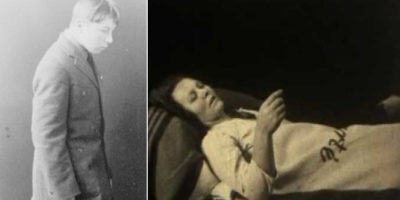This Song Kills, Literally! Over 100 People Reportedly Killed Themselves After Listening To this Suicide Song.

What’s common between a teenage girl drowning herself in Vienna, a shopkeeper killing himself in Budapest, and a woman committing suicide with overdose in London? The notorious ‘Gloomy Sunday’, also called the ‘Hungarian suicide song’. The song has been linked to over a hundred suicides, including the man who composed it.
While it might be a legend, but 34 year old Hungarian-born Rezso Seress did compose ‘Vége a világnak’ (The world is ending) in 1933, just at the end of World War I. This was a time when depression was sweeping the planet. The song turned out to be the greatest hits of his career.

Some reports say it was Seress who wrote his own lyric about war and apocalypse, while others claim it was his friend Javor’s girlfriend who left him and inspired the song as a poem. Whatever might have depressed Seress, he wrote the tune that became ‘Gloomy Sunday.’ The melody was given a melancholy Hungarian lyric by his friend, the poet Laszlo Javor, and later became the heartbreak ballad that became the notorious suicide song.
‘Szomorú Vasárnap’ as it was called never quite left a mark until two years later the recorded version by Pál Kálmar was connected to a chain of suicides, and the song was banned. While Hungary does have a higher suicide rate (around 46 out of every 100,000 people commit suicide every year), it was impossible to confirm the link between the song and the suicides.
However, the commotion was enough. The notoriety of the suicide song meant music publishers from America and England came flocking.
Sam M. Lewis and British lyricist Desmond Carter each wrote their English translations. Lewis’s version soon caught on. The song was recorded in 1936 by Hal Kemp and his Orchestra. Here’s the second verse:
“Gloomy is Sunday, with shadows I spend it all
My heart and I have decided to end it all
Soon there’ll be candles and prayers that are sad, I know
Let them not weep, let them know that I’m glad to go
Death is no dream, for in death I’m caressing you
With the last breath of my soul I’ll be blessing you.â€
Lewis however did tweak the verse to allow a ray of hope. It reads:
“Dreaming, I was only dreaming,
I wake and I find you asleep in the deep of my heart, dear.â€
Billie Holiday recorded the definitive version of the song in 1941. The song was banned in England and BBC deemed the song ‘too upsetting’ in the early ‘40s. Only instrumental versions of the song could be played on the radio. It wasn’t until 2002 that the British lifted this ban.
‘Gloomy Sunday’ made news again in 1984 after Ozzy Osbourne was dragged to the Court by the parents of a teen who shot himself while listening to Osbourne’s ‘Suicide Solution’. A German film, Ein Lied von Liebe und Tod(Gloomy Sunday – A Song of Love and Death) released in 1999 told the tale of a love triangle and a song that triggered several suicides. The song has since been recorded by the likes of Elvis Costello, Sarah McLachlan and Heather Nova.
As for Rezso Seress, there are several versions of his tragic ending. Some say he survived a concentration camp that killed his mother. Others believe he tried to reconcile with his ex-girlfriend who inspired the melody and found she had committed suicide.
No matter what the truth may be, Seress attempted suicide several times and finally succeeded in 1968 when he jumped from a Budapest apartment window. That was the end of Seress, and sealed the legend of the suicide song.
[source: mentalfloss.com]
According to scientists, This is the most relaxing tune ever recorded.
























